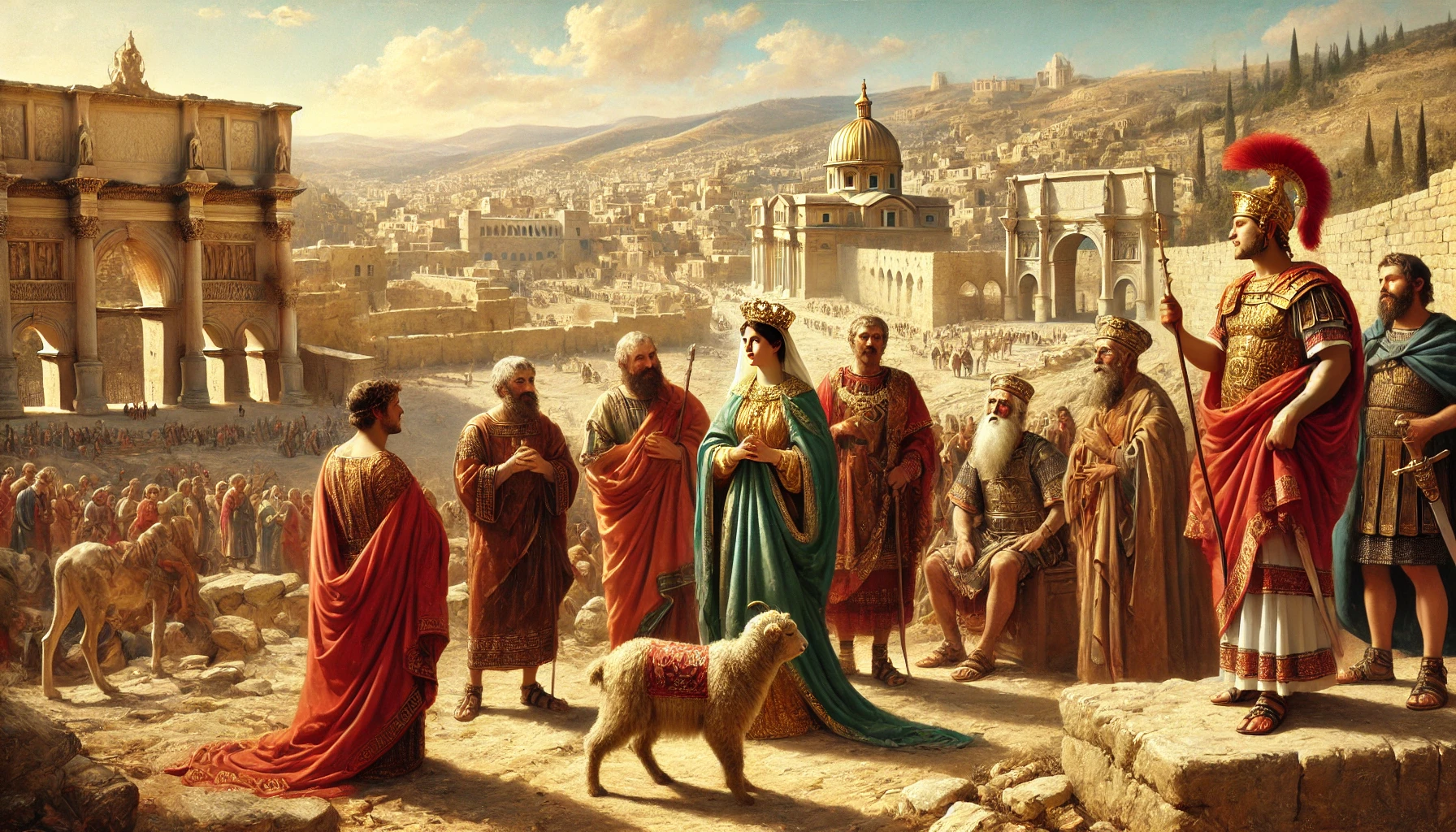Introduction: An Empress on a Sacred Mission
In 326 AD, Helena, mother of Emperor Constantine the Great, undertook one of the most influential journeys in Roman—and Christian—history. Already a revered figure at court, Helena ventured to the Holy Land to identify the physical locations of Christ’s Passion. Her pilgrimage, fueled by faith and imperial authority, not only transformed Jerusalem but redefined the geography of Christianity for centuries to come.
The Rise of Constantine and the Christian Court
Helena’s journey occurred in the wake of Constantine’s conversion to Christianity and the issuance of the Edict of Milan in 313 AD, which legalized Christian worship throughout the Roman Empire. As Christianity moved from persecution to patronage, the imperial family embraced its tenets. Helena, deeply devout and influential, played a pivotal role in aligning the empire with the Christian faith.
The Purpose of the Pilgrimage
Helena’s mission was more than devotional—it was political, cultural, and theological. Her goal: to identify, mark, and preserve the sites associated with Christ’s life, crucifixion, and resurrection. She traveled to Jerusalem, Bethlehem, and other locations, guided by local bishops, clerics, and oral traditions. The journey represented a confluence of empire and religion, sanctifying the land under Roman-Christian authority.
The Discovery of the True Cross
According to Christian tradition, Helena discovered the True Cross upon which Jesus was crucified. The story recounts that during excavations near Golgotha, three wooden crosses were found. Helena’s advisors, including Bishop Macarius of Jerusalem, tested them on a sick woman; upon touching the third cross, she was healed. This was taken as divine confirmation of its authenticity. Relics were distributed to churches, while part of the cross remained in Jerusalem, enshrined in newly built churches.
The Church of the Holy Sepulchre
One of Helena’s most enduring legacies was the construction of the Church of the Holy Sepulchre in Jerusalem, commissioned by Constantine and based on sites she helped identify. Built over what was believed to be both Golgotha and the tomb of Christ, the church became the holiest site in Christendom. It signified not only a religious center but a political one—Christianity’s sacred core now bore the imprint of Roman power and piety.
Bethlehem and Other Foundations
Helena also initiated the construction of the Church of the Nativity in Bethlehem and the Eleona Church on the Mount of Olives. These projects preserved holy locations, encouraged Christian pilgrimage, and provided tangible focal points for worship. Her actions laid the foundations for Christian sacred geography, influencing both liturgy and devotional practice throughout the empire.
Helena’s Imperial Piety
Helena’s status as Augusta granted her significant influence, and her travels were accompanied by imperial resources. But she chose to act in humility, often portrayed as generous, simple in dress, and deeply faithful. Her mission exemplified the emerging ideal of the Christian ruler: a servant of God wielding power for divine purposes. She became a model for Christian queens and empresses in the centuries to follow.
Legacy and Canonization
Helena died shortly after her pilgrimage, but her legacy endured. She was canonized as a saint in both the Eastern Orthodox and Roman Catholic traditions. Her feast day is celebrated on August 18 in the West and May 21 in the East. She is remembered not only as Constantine’s mother but as a founder of Christian memory—an empress whose footsteps still guide pilgrims today.
Conclusion: Empire, Faith, and the Eternal City
Helena’s pilgrimage in 326 AD was a turning point in Christian history. By uniting imperial vision with religious devotion, she helped shape the physical and spiritual map of Christianity. In the hills of Judea, under the sunlit stones of Jerusalem, an empress searched not for conquest, but for the cross. And in doing so, she helped a once-persecuted faith become the soul of an empire.






